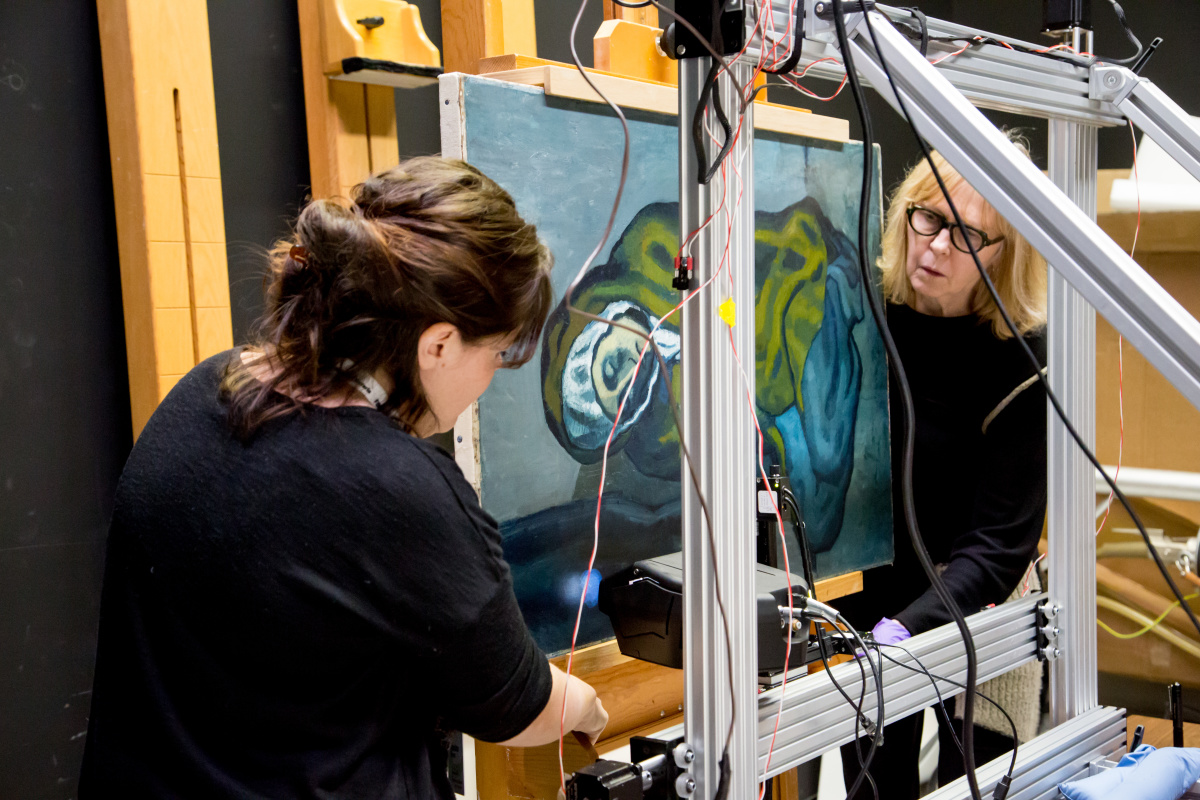Almost 100 years after Pablo Picasso painted his famous La Miséreuse Accroupie (The Crouching Beggar), a team of researchers have discovered another painting underneath it.

The oil painting is currently housed at the Art Gallery of Ontario and was originally painted by Picasso in 1902. The Ontario researchers took an X-ray of the painting as part of unrelated background research. In the X-ray, known as an x-radiograph, the team discovered the hidden landscape scene.
AGO researchers then teamed up with Northwestern University and the National Gallery of Art to learn more. The team used non-invasive light techniques, including infrared imaging, and an X-ray fluorescence imaging instrument to detail the artwork buried in Picasso’s famous pieces.
“We now are able to develop a chronology within the painting structure to tell a story about the artist’s developing style and possible influences,” said Sandra Webster-Cook, AGO’s senior conservator of paintings, said in a statement.

Get breaking National news
See more Global News coverage of Pablo Picasso’s work:
Underneath La Miséreuse Accroupie, for example, is a landscape by another Barcelona painter, though the identity of the artist remains a mystery. Picasso painted over this piece by turning the canvas 90 degrees to the right, and using some of the landscape forms to create the woman depicted in his artwork. The study also revealed that Picasso changed the positioning of the woman’s arm.
“Picasso had no qualms about changing things during the painting process,” said Mark Walton, a research professor at Northwestern’s McCormick School of Engineering.
“Our international team — consisting of scientists, a curator and a conservator — has begun to tease apart the complexity of ‘La Miséreuse accroupie,’ uncovering subtle changes made by Picasso as he worked toward his final vision,” Walton, director of the research program that conducted the study, added.
The discoveries prompted a second look at 39 bronze and 11 sheet metal sculptures painted housed in the Musée national Picasso-Paris collection. In this project, conducted by the NU-ACCESS group at Northwestern, scientists, art conservators and curators used portable instruments as well as a database of alloy “fingerprints” to analyze the bronze and metal sculptures.
The researchers traced five bronze sculptures cast in Paris back to the Second World War, to a little-known collaborator of Picasso, Émile Robecchi. In addition, the research team determined that the use of silver the facial features of one of his cast-iron sheet metal sculptures was inspired by one of his wives.
“Our project highlights the value of cutting-edge scientific tools and international collaborations in advancing discoveries in art,” said Francesca Casadio, an executive director at The Art Institute of Chicago.
“We now can begin to write a new chapter in the history of this prolific giant of modern art.”
















Comments